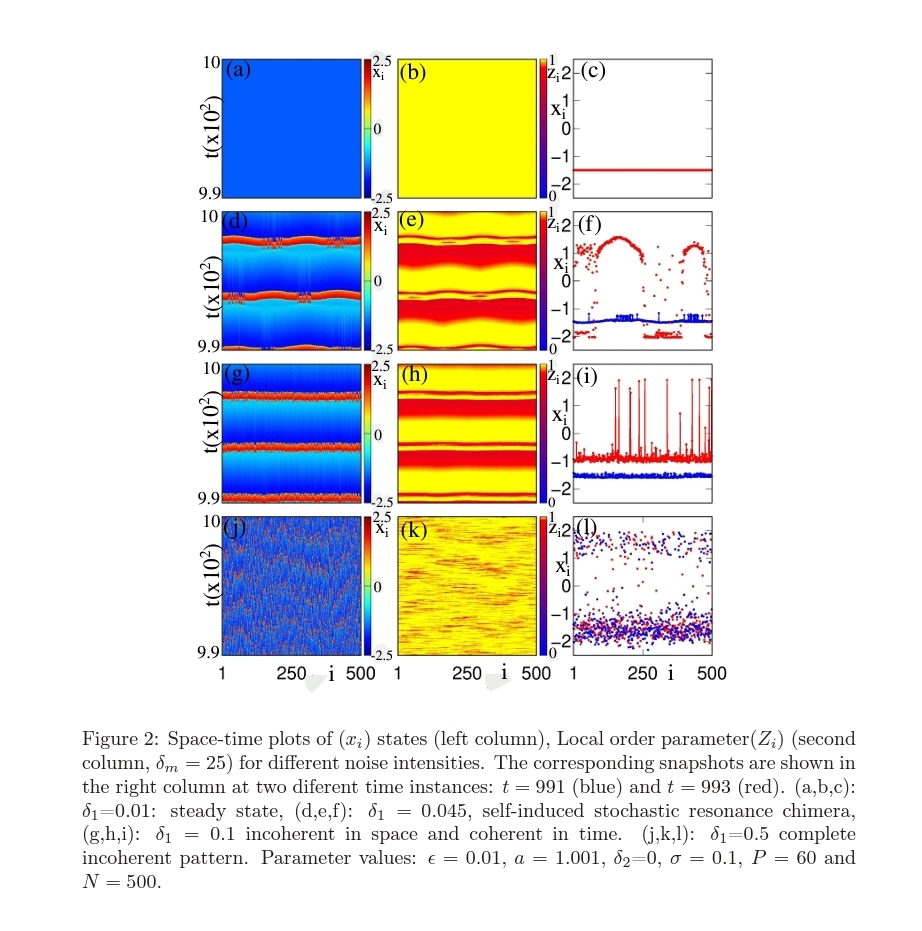Translate
giovedì 22 aprile 2021
# life: cascading effects of noise on plants
martedì 18 marzo 2025
# qubit: stability of classical shadows under gate-dependent noise
lunedì 28 giugno 2021
# gst: synchronous dynamics by uncorrelated noise
venerdì 28 marzo 2025
# gst: noise as endogenous control
lunedì 26 agosto 2024
# gst: distance to criticality in unknown noise
lunedì 1 settembre 2025
# gst: apropos of (unexpected?) transitions; the bizarre role of noise as operational control
venerdì 30 maggio 2025
# gst: apropos of double-wells, stabilizing role of multiplicative noise in nonconfining potentials.
sabato 9 febbraio 2019
# gst: (you must) read the noise as a message
<< Noise is often thought to be a nuisance with negative consequences, (..) But through this study we show that noise can actually be used as a salient informational cue. It can provide individuals with important information about their environment and when it's safe to hunt. >> Inga Geipel
When does noise become a message? Smithsonian Tropical Research Institute. Feb 6, 2019.
https://m.phys.org/news/2019-02-noise-message.html
<< Background noise can have strong negative consequences for animals, reducing individual fitness by masking communication signals, impeding prey detection and increasing predation risk. While the negative impacts of noise across taxa have been well documented, the use of noise as an informational cue, providing animals with reliable information on environmental conditions, has been less well studied. >>
Inga Geipel, Marcus J. Smeekes, et al. Noise as an informational cue for decision-making: the sound of rain delays bat emergence. Journal of Experimental Biology 2019 222: jeb192005 doi: 10.1242/jeb.192005 Feb 1, 2019.
http://jeb.biologists.org/content/222/3/jeb192005
Also
"noise" | "rumore"
mercoledì 9 settembre 2020
# gst: to reach detectability of a weak signal, they add background noise
lunedì 12 agosto 2024
# gst: tracking criticality in unknown noise
sabato 26 aprile 2025
# gst: how noise affects memory in linear recurrent networks
lunedì 8 dicembre 2025
# gst: apropos of escape, qualitatively distinct mechanisms of noise-induced escape in diffusively coupled bistable elements.
martedì 19 novembre 2019
# gst: measuring biological noise of gene expression
giovedì 4 settembre 2025
# gst: noisy active matter
sabato 19 luglio 2025
# gst: noise reinstates collapsed populations; stochastic reversal of deterministic extinction.
mercoledì 18 maggio 2022
# brain: jazzy perceptions inside, there’s more to all the noise; even in the dark, neurons of the visual cortex chat
venerdì 28 febbraio 2025
# gst: apropos of the impact of noise, stochastic Kuramoto oscillators with inertia and higher-order interactions.
sabato 16 dicembre 2023
# gst: correlated noise and critical dimensions.
lunedì 26 agosto 2019
# gst: the hypothesis to optimize multiplicative noise to enhance a signal-to-noise ratio
AA << study simple integrate-and-fire type models with multiplicative noise and consider the transmission of a weak and slow signal, >>
<< The specific question of interest is whether and how the state-dependence of the noise can be optimized with respect to information transmission >>
<< also in a biophysically more relevant situation, multiplicative noise can enhance the signal-to-noise ratio (..) results shed light on a so far unexplored aspect of stochastic signal transmission in neural systems. >>
Jonathan Bauermann Benjamin Lindner. Multiplicative noise is beneficial for the transmission of sensory signals in simple neuron models. Biosystems. Volume 178, Apr 2019, Pages 25-31. doi: 10.1016/ j.biosystems.2019.02.002
https://www.sciencedirect.com/science/article/pii/S0303264718303861



